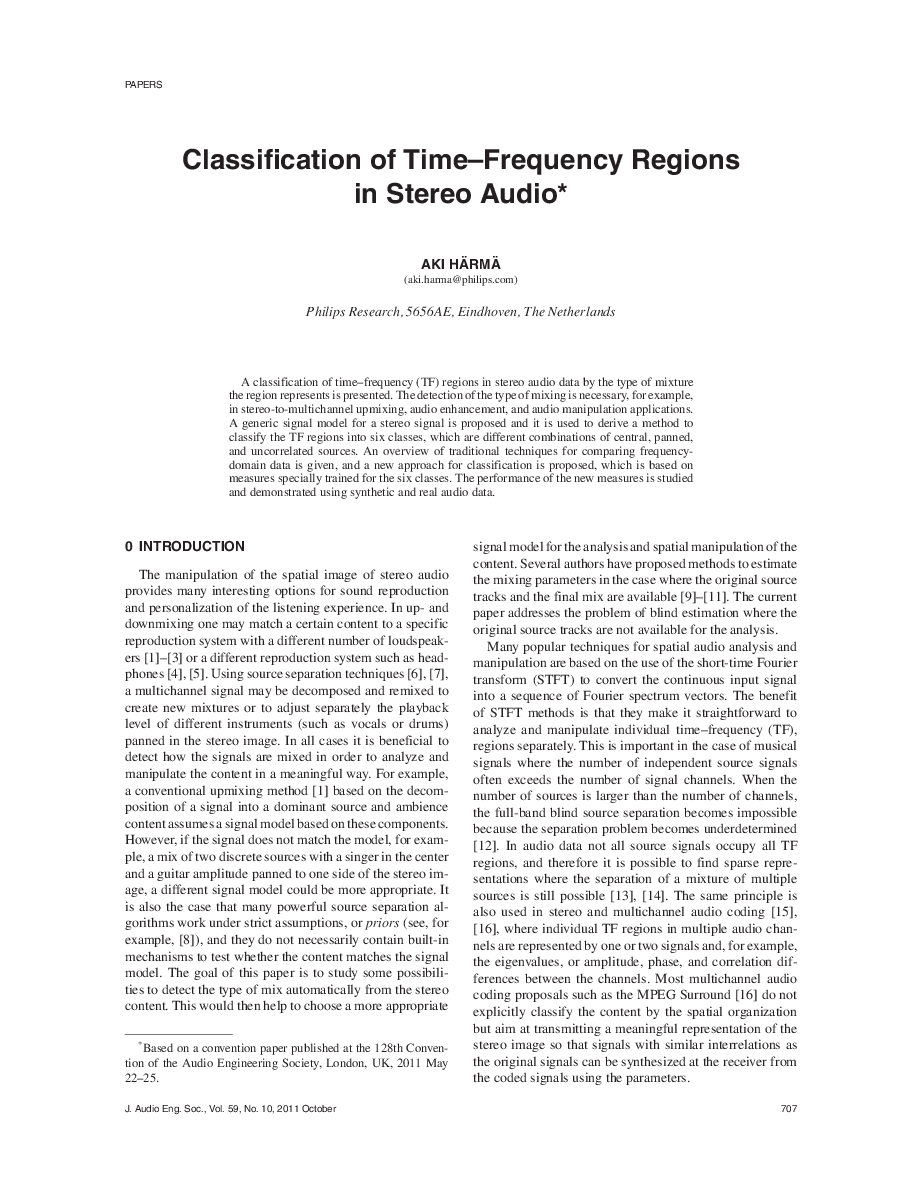Home / Publications / E-library page
You are currently logged in as an
Institutional Subscriber.
If you would like to logout,
please click on the button below.
Home / Publications / E-library page
Only AES members and Institutional Journal Subscribers can download
Algorithms that manipulate, remix, or transform stereo audio signals to suit the format of sound reproduction systems make assumptions about the way in which the stereo signal was originally mixed. However, these algorithms usually do not test if the assumptions are valid. In order to determine the type of mixing used in a stereo mix, this research compares two blind classification algorithms that divide individual time–frequency regions into six classes of mixing types. The results show that mixing strategies vary with the musical genre, and the classification algorithm can reduce the instability and center disintegration when upmixing a stereo signal to a multichannel format.
Author (s): Härmä, Aki
Affiliation:
Philips Research, Eindhoven, The Netherlands
(See document for exact affiliation information.)
Publication Date:
2011-10-06
Import into BibTeX
Permalink: https://aes2.org/publications/elibrary-page/?id=16109
(559KB)
Click to purchase paper as a non-member or login as an AES member. If your company or school subscribes to the E-Library then switch to the institutional version. If you are not an AES member Join the AES. If you need to check your member status, login to the Member Portal.

Härmä, Aki; 2011; Classification of Time–Frequency Regions in Stereo Audio [PDF]; Philips Research, Eindhoven, The Netherlands; Paper ; Available from: https://aes2.org/publications/elibrary-page/?id=16109
Härmä, Aki; Classification of Time–Frequency Regions in Stereo Audio [PDF]; Philips Research, Eindhoven, The Netherlands; Paper ; 2011 Available: https://aes2.org/publications/elibrary-page/?id=16109